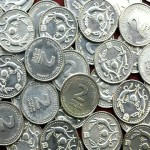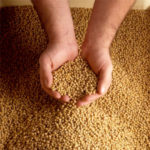Friday’s trade saw EUR/CHF within the range of 1.2049-1.2076. The pair closed at 1.2062, losing 0.04% on a daily basis.
At 7:50 GMT today EUR/CHF was up 0.03% for the day to trade at 1.2064. The pair touched a daily high at 1.2068 at 3:35 GMT.
Fundamentals
Euro zone
Business conditions in Germany
Business climate in Germany probably worsened in October, with the respective gauge slipping to 104.1 from 104.7 in September. If so, this would be the lowest index reading since December 2012, when it stood at 102.4.
The IFO Business Climate Index reflects entrepreneurs’ sentiment in regard to current business situation and their expectations for the next six months. The index is based on a survey, conducted by phone and encompasses 7 000 companies, that operate in sectors such as manufacturing, construction, wholesaling and retailing industry. The Business Climate Balance represents the difference between the percentage share of respondents that are optimistic and the share of respondents that are pessimistic. The balance can fluctuate between -100, which suggests all responding companies assess their situation as poor and expect business conditions to deteriorate, and +100, which suggests all responding companies assess their situation as good and expect an improvement in business conditions. In order to calculate the IFO Business Climate Index, the Balance is normalized to the average of a base year, which currently is 2005.
The IFO Business Climate Index is comprised by two equally-weighted sub-indexes – a gauge of expectations and a gauge of current assessment. The IFO expectations index probably dropped to 98.4 in October from 99.3 in September, as the latter has been the lowest since December 2012. The IFO current assessment index probably slid to 109.5 in the current month from 110.5 in September. If so, this would be the lowest index level since June 2013. In case any of the gauges registered a larger than projected decline, this might have a bearish effect on the common currency.
The CESifo Group is to release the official numbers at 9:00 GMT on Monday.
Stress tests
The stress tests, conducted by the European Central Bank, identified a capital shortfall at the total amount of EUR 25 billion ($32 billion) as of the end of 2013. None of the largest banks in Europe were found lacking and no banks in France, Germany and Spain required more capital. These tests should diminish concerns in regard to the financial health of lending institutions in the Euro zone “and may provide support to risk assets and the euro,” Australia & New Zealand Banking Group Ltd. analysts, led by senior economist Cherelle Murphy, wrote in a report today, as reported by Bloomberg News. “With the ECB’s Asset Quality Review now out of the way, the euro will be more responsive to the data, while the Australian dollar should continue to perform well.”
ECB covered-bond purchases
At 3:30 PM Frankfurt time today the European Central Bank is expected to announce how much it spent on covered bonds during the past week. The central bank purchased at least EUR 800 million ($1 billion) of assets from Portugal to Germany during the three days since the start of the program on October 20th, according to traders opinion last week, Bloomberg reported. “In terms of the ECB’s aspiration to expand its balance sheet, the market wants it all now,” said Richard Barwell, senior European economist at Royal Bank of Scotland Group Plc in London, cited by the same media. “There’s scope for immediate disappointment to the scale of the purchases we see today.” ECB President Mario Draghi is seeking to expand the balance sheet of the financial institution by as much as EUR 1 trillion.
Pivot Points
According to Binary Tribune’s daily analysis, the central pivot point for the pair is at 1.2062. In case EUR/CHF manages to breach the first resistance level at 1.2076, it will probably continue up to test 1.2089. In case the second key resistance is broken, the pair will probably attempt to advance to 1.2103.
If EUR/CHF manages to breach the first key support at 1.2049, it will probably continue to slide and test 1.2035. With this second key support broken, the movement to the downside will probably continue to 1.2022.
The mid-Pivot levels for today are as follows: M1 – 1.2029, M2 – 1.2042, M3 – 1.2056, M4 – 1.2069, M5 – 1.2083, M6 – 1.2096.
In weekly terms, the central pivot point is at 1.2060. The three key resistance levels are as follows: R1 – 1.2087, R2 – 1.2112, R3 – 1.2139. The three key support levels are: S1 – 1.2035, S2 – 1.2008, S3 – 1.2000.





